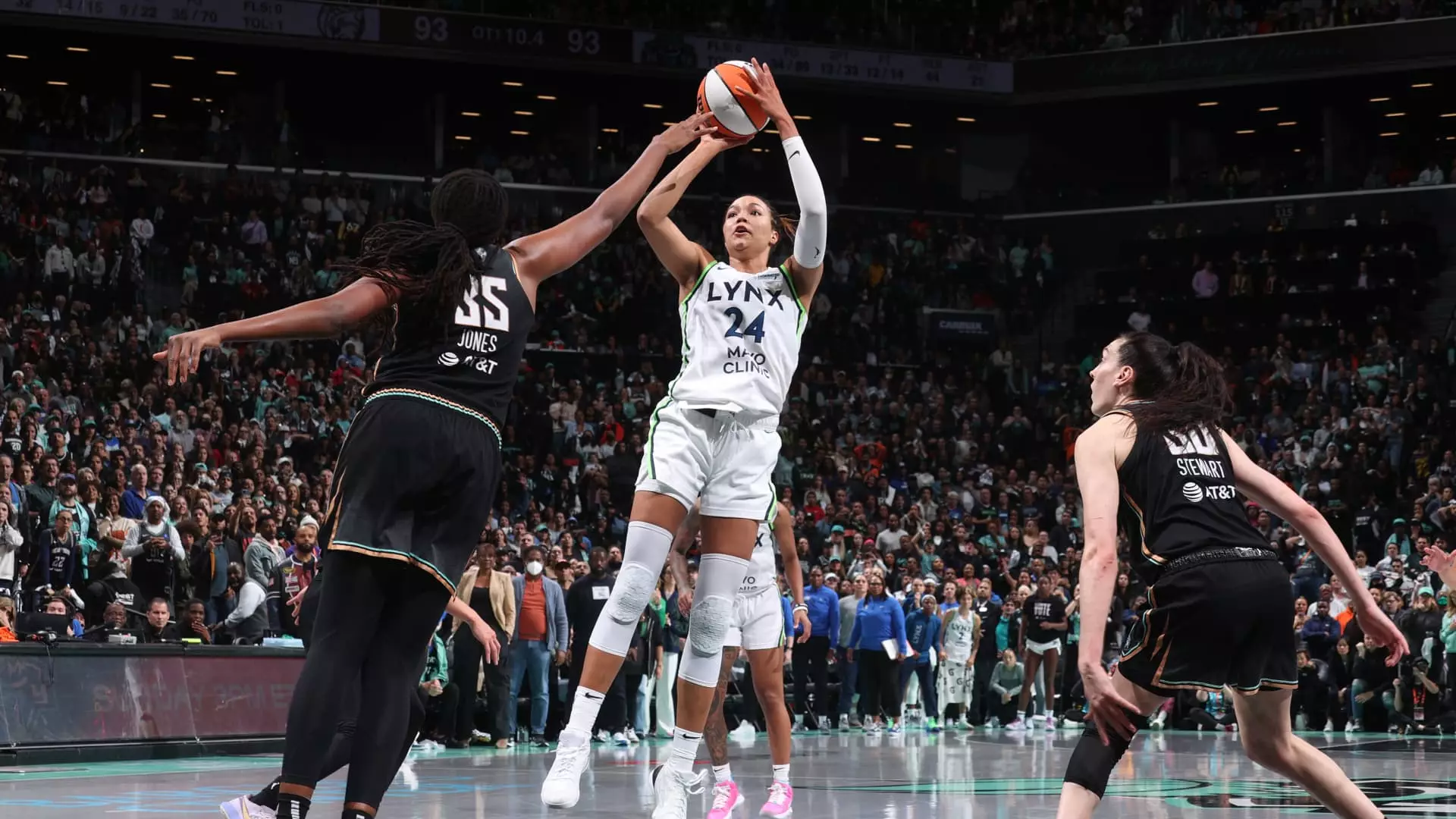The Women’s National Basketball Association (WNBA) is on the cusp of a transformative phase, set to redefine both the structure of its gameplay and its overall engagement with fans. With the announcement from WNBA Commissioner Cathy Engelbert regarding significant changes to the league’s format for the 2025 season, the excitement among basketball followers is palpable. These changes not only reflect the league’s upward trajectory in popularity but also its commitment to providing an exhilarating viewing experience for fans.
Starting in 2025, the WNBA will expand its regular season from 40 to 44 games. This change signals a robust confidence in the league’s increasing viewership and engagement levels. Engelbert highlighted that the adjustments to the playoff format—which will now feature a best-of-seven Finals series instead of the previous five-game series—demonstrate an effort to enhance the spectacle of the playoffs. The new 2-2-1-1-1 format means that the higher seed will have the advantage of hosting the first two games, a shift designed to intensify the competitive atmosphere.
Engelbert noted that these alterations have been considered since the disruptions of the COVID-19 pandemic, hinting at a hunger for improvement and adaptation. The introduction of charter flights for teams not only increases comfort but also suggests a willingness to invest in the athletes’ experiences. This progressive move, coupled with a growing fanbase, likely pushed the league to implement substantial changes. As Engelbert stated, “The league’s growth and increased demand for WNBA basketball made this the ideal time to expand the schedule,” emphasizing a strategic response to audience desires.
The addition of new teams, particularly the Golden State Valkyries, signifies a bold step toward establishing a more comprehensive landscape for women’s professional basketball. It is noteworthy that the WNBA will reach 13 teams in 2025, and plans for further expansion into Toronto and Portland by 2026 showcase the league’s ambition to tap into new markets. This approach not only elevates the visibility of women’s sports but also helps in fostering a greater number of athletes competing at a high level.
The decision to expand into major cities reflects a growing recognition of the potential within women’s sports leagues, evidenced by significant investments and media deals. The latest media rights agreement, valued at $2.2 billion over 11 seasons, underscores the financial and cultural shifts occurring. The partnership with the National Basketball Association in negotiating media contracts enhances visibility and can lead to further opportunities for engagement and revenue generation.
As the league embraces change, it must also confront ongoing challenges, especially regarding player safety and social issues. The emergence of talented rookies such as Caitlin Clark and Angel Reese, along with established stars like Breanna Stewart and A’ja Wilson, has certainly contributed to the league’s growth. Their performances not only excite fans but also attract new viewers, amplifying the league’s narrative of empowerment and excellence.
However, as the popularity of the WNBA rises, so does the inevitable scrutiny that comes with prominence. Reports of racism and online harassment faced by players highlight critical issues that the league must address. Engelbert’s initial reluctance to condemn hate speech in a high-profile interview sparked discussions about the responsibilities of leadership in advocating for player safety and support. Although she later clarified her stance, it underscores the need for a proactive approach in combating discrimination, which is becoming increasingly relevant as the WNBA continues to rise in stature.
With the 2024 Finals underway, the competitive spirit remains vibrant as the Minnesota Lynx face the New York Liberty, foreshadowing an electrifying conclusion to this season. The future of the WNBA not only holds expanded gameplay and new teams but also a profound opportunity to serve as a beacon for women’s professional sports. As discussions surrounding equity, engagement, and athletics unfold, the WNBA stands poised to to champion the narratives of the athletes who drive it forward. The league’s evolution marks the beginning of a new chapter—one filled with promise and an expansive horizon waiting to be explored.


Leave a Reply